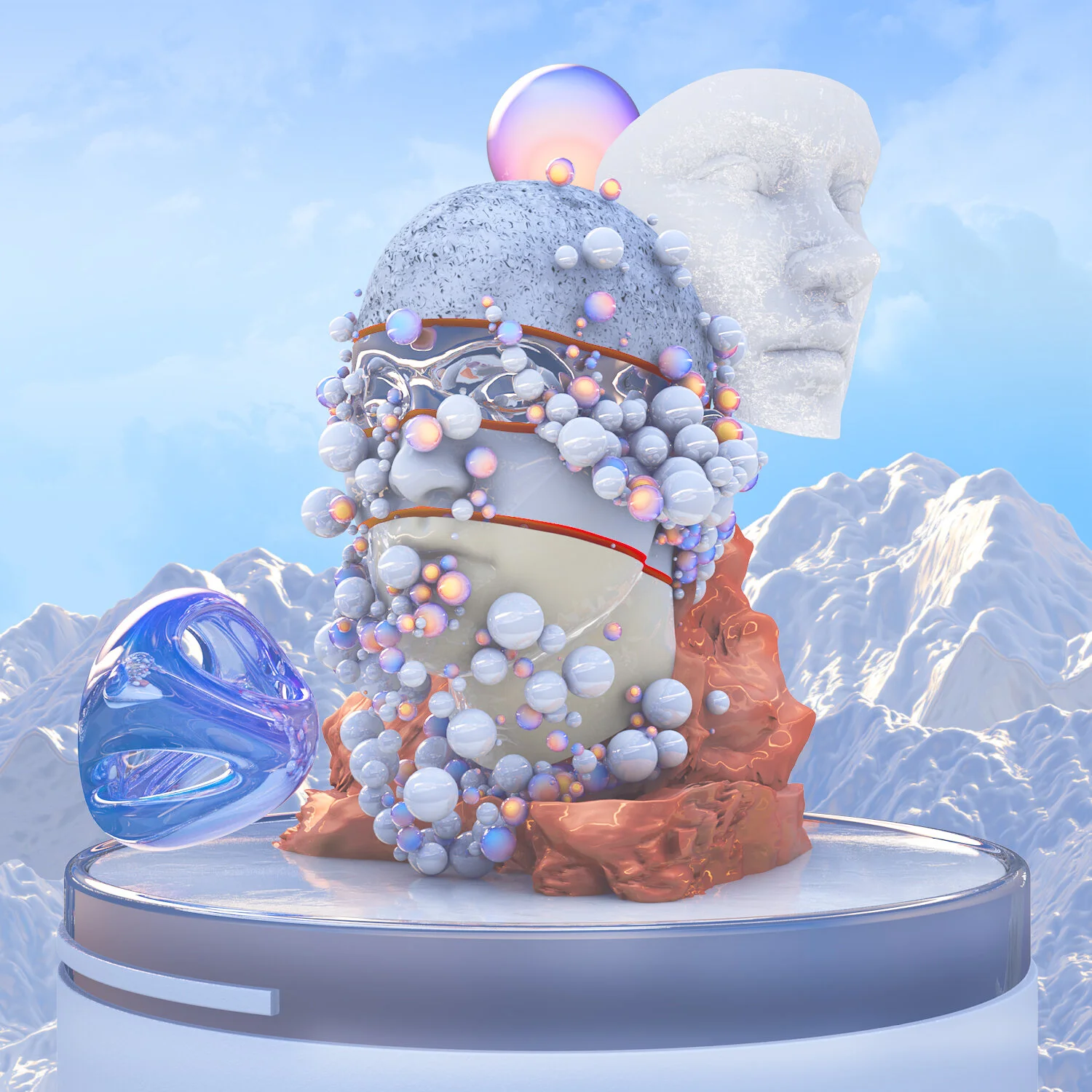Exploring the Decentralised Space of NFT Art
by Deirbhile Ní Bhranáin
Junior Producer & Editor Global Digital Futures
In this week’s episode, we spoke to Tais Koshino and Amelie Maia, two digital artists who curate the DiverseNftArt space. Listen to the episode, NFTs & Digital Art Production, here. In March 2021, digital NFT (Non-Fungible Token) art had an unprecedented upward spike in popularity. Since it exploded into the mainstream, NFT Art has been hailed by some as an opportunity to make the art world more globally accessible and less focused on the physical space of galleries and exhibitions. Meanwhile, other voices claim that NFTs are not inherently new, just a reformatting of digital art.
Either way, it’s clear that the market potential of digital art has given artists in the Global South a new playing field in comparison to more traditional art, where spaces are often dominated by artists and collectors from the Global North. To expand and diversify the space, platforms with a focus on community building and curation have opened up in the Global South. Some of these spaces, including the Brazil-based Hic et Nunc platform and the Fak’ugesi festival of African digital innovation, serve to provide spaces which aim to give opportunities to those who may not be immediately at the top of the bidding chain.
Of similar significance is the role of the curator in NFT art, a role which has also undergone a recent transformation. One of the most significant and appealing aspects of the NFT art marketplace was its peer-to-peer dimension, which seemed to cut out the middleman in an appealing way. But with increasing numbers of artworks being minted every day, the role of the curator is more significant and varied than ever.
“We talk about decentralisation. It implies to create things collectively but most of the big platforms that are marketplace of NFTs, they increase the competition like making ranks established by which artist sells more so who is on the top will still be on the top.”
Questions around what NFTs mean for the future of contemporary art are important when it comes to the connection between collectives and offline communities and the difference in opportunity which they provide. Also important to consider is whether the structural inequalities in the traditional art world are replicated in the world of NFTs, for example in the controversy surrounding racist aspects of the famous Bleeple piece. Initiatives such as The Digital Diaspora exhibition, which used Afrofuturism to celebrate Black liberation and creativity, and DiverseNFTArt which you can hear about in our podcast episode, work towards combating these issues with the space they provide.
The impact of NFTs has been controversial in several ways, with the relentless enviornmental issues of cryptocurrency and crypto art, hot on the heels of conversations about increased inequality. Solutions such as Clean NFTs on Tezos, which use far less energy, have been implemented and are in use by some platforms, but have as yet failed to be used by a majority. Michael Ugwu, who features in the next GDF Think Tank discussion on this topic, believes Ethereum gas fees and energy usage will be remedied and mitigated in the next year; there are multiple possibilities for this. Experts also believe that education is key to the NFT market: for example learning more about how to get started with the basics of minting artworks and setting up a wallet, but also keeping artists and curators informed of the policies, opportunities and connections to be made within these communities.
Keep an eye out for our roundtable discussion on NFTs and digital innovation in Africa. We were joined by NFT and crypto investor Michael Ugwu; Dillion S. Phiri, the Curator of Fak’ugesi 2021; and Dr. Tegan Bristow, Senior Lecturer at Wits School of the Arts. It’s a great conversation!
Deirbhile Ní Bhranáin is an Irish author and journalist based in London. She is currently completing an MA in International Journalisms at SOAS. She is interested in the impact of the future on the present and on the utopian possibilities of narrative.
Spotlight: Introducing some of our favourite digital artists from the Global South and the diaspora
Credits:
ỤMỤ ADA 49-99 (2019) by Osinachi
Still from Clitoria Ternatea (2021) by Marisa Noana
Sebelas Rumah : 11 Stories of Erasure (2021) by No-To-Scale
Interplanetary Migration, (2020) by Afroscope
Creation of My Metaverse (Between this World and the Next) (2021) by Serwah Attafuah
Am I Pretty? (2020) by Osinachi
Untitled piece (2021) by Diela Maharanie
From the series UNIQUENESS by Panji Krishna










